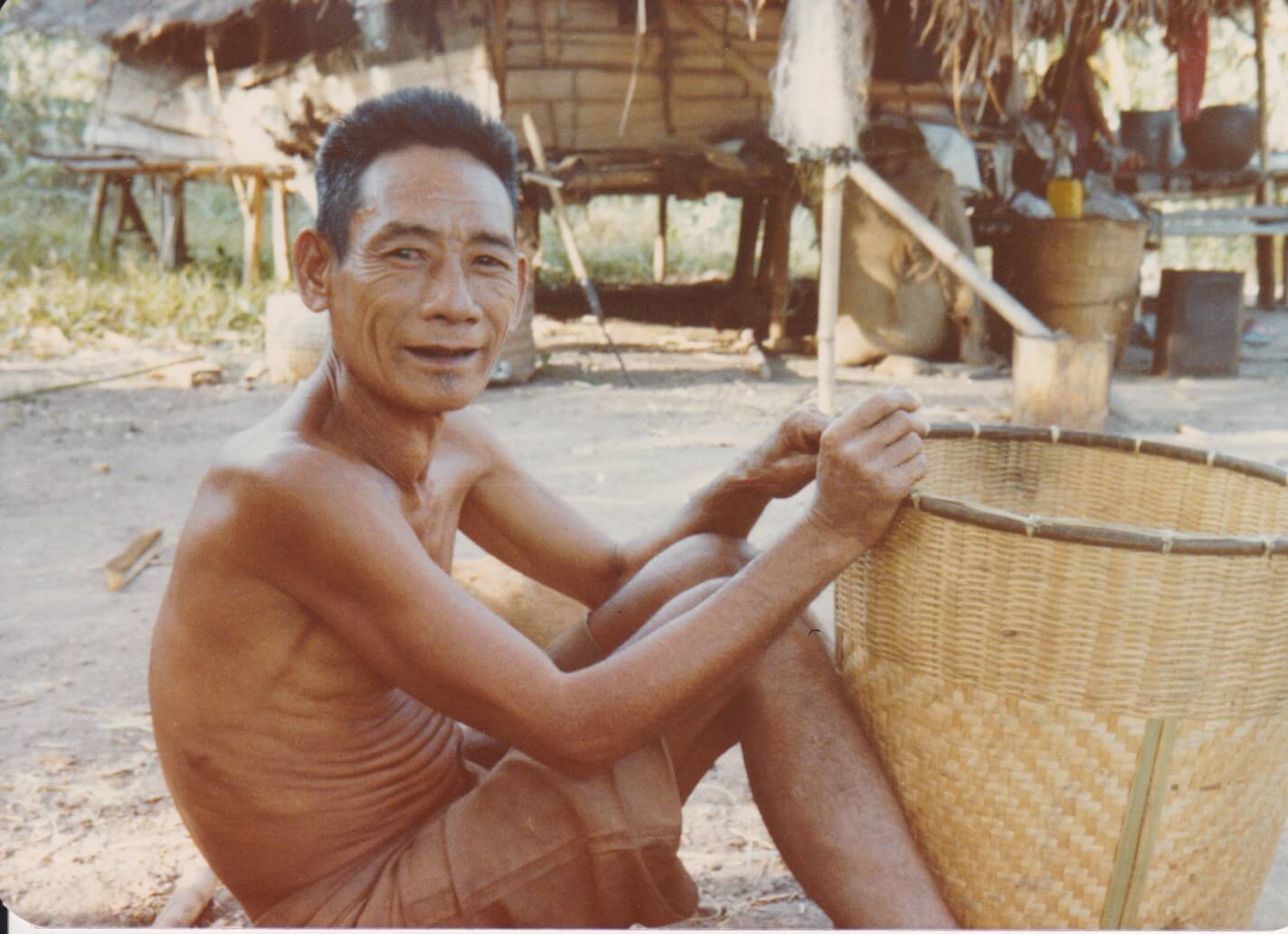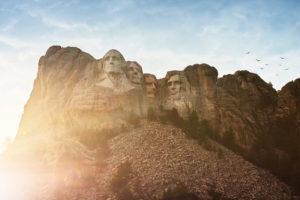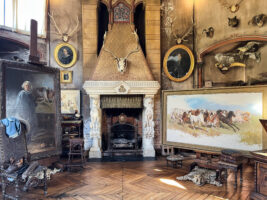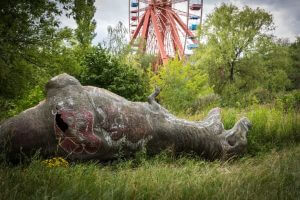Support Hidden Compass
Our articles are crafted by humans (not generative AI). Support Team Human with a contribution!
This story has been republished in the Hidden Compass Legacy Issue in celebration of reaching 100,000 readers. All proceeds from this campaign will support Hidden Compass.
Hundreds of giant, winding branches — some tens of thousands of years old — extend in every direction. They have been growing, ring by generational ring, ever since our hominid ancestors formed their first sentences. For most of that time, the span of this tree has been unknown to us. Even now, most humans will spend the entirety of our lives exploring a mere handful of its twigs. Each leap to a new vantage point, as I can attest, takes thousands of hours of practice.
Meanwhile, a catastrophe is unfolding. Whole sections of this tree are decaying and collapsing around us, creating chasms in the canopy. We can’t take stock of the damage.
Or at least we couldn’t, until a handful of researchers wandered into the wreckage and launched one of the most remarkable waves of academic discovery of the last century.
~~
Much of the forest along the undulating plateau beside the Khwae Noi River, in western Thailand, had been cleared by the time Dr. Kerr arrived in July of 1922. But pockets of the original forest — mainly oaks and pines — remained.
Kerr was surveying the area for a British company that hoped to build a railway connecting Thailand and British Burma. The company never built the railroad, but Kerr’s notes — regarding a couple of isolated villages, where he spent only a few hours — unearthed something completely unknown to the outside world.
Water, sand, fire, elephant, buffalo, forest …
The word list was minimal — “very meagre” as Kerr himself admits — consisting of basic elements, numbers, family members, animals. The language had no system of writing, so Kerr’s team made do with Siamese and Roman characters.
Hi ē lak ha yī ā kô wē? What is this tree called?
They have been growing, ring by generational ring, ever since our hominid ancestors formed their first sentences.
The list, along with three phrases, was published in the Journal of the SIAM Society in 1927. Half a century later, linguist David Bradley picked it up.
Bradley, a young academic with a painter’s brush mustache and glasses, was freshly minted with a doctorate in phonetics and linguistics from the University of London. He had been focusing his research on a cluster of relatively widely spoken Tibeto-Burman languages. But when he came across the surveyor’s notes of this unknown language, Bradley was enthralled. In 1977, he left Australia and traveled 4,500 miles to find it.
Referencing Thai government documents on “hill tribes,” Bradley mapped out the locations of the two villages Kerr visited in 1922. Then Bradley set out to the first of these, called Ban Lawa. He took a bus to a place called “waterfall village.” At the end of the road, the linguist hopped on a boat, rode it upriver, disembarked, and hiked three more miles to Ban Lawa.
Bradley first approached the 62-year-old village headman. He was, it turned out, one of the last fluent speakers of the language Kerr had documented 50 years earlier. Bradley only found two other speakers: The first was deaf, so the young linguist showed her cards with images of objects and animals. But picture cards were of no use with the second, as he was blind.
They “weren’t able to be quite as helpful as I think they would have liked,” Bradley told me.
Still, it was enough for him to get a sense of the vocabulary and language, and he became the first outsider to record the word these people used to describe themselves. But just as the Gong people were about to be introduced to the wider world, they and their branch of language met disaster.

A Gong man from the village of Kok Chiang in 1982. Photo: David Bradley.
After Bradley’s visit in 1977, the Thai government built several hydroelectric dams on the Khwae Noi, flooding villages along the way. And so the two villages whose language was first described by Kerr in 1927 were destroyed — their people dispersed and resettled.
The disruption would have made it impossible for the Gong language to survive.
Listen to the Gong language. Audio courtesy of the Pacific And Regional Archive for Digital Sources in Endangered Cultures.
~~
It’s natural for languages to go out of use. Ever since the advent of agriculture, when hunter-gatherer societies coalesced — sometimes voluntarily, sometimes violently — into concentrated societies, dominant languages pushed others out of existence.
But the rate of language loss has accelerated in the modern age.
As a child, I spent foggy weekend mornings in my California mountaintop home paging through mahogany-colored encyclopedias and atlases. I immersed myself in them, my fingers brushing over obscure descriptions and unknown places, marveling at what had been learned and cataloged.
Each language, I realize now, is a unique key to interpreting our universe, to conveying knowledge and expression, to connecting with our peers and ancestors.
There are thousands of views from the tree of human languages. But many are disappearing. Entire branches of ancestral wisdom are going extinct — or, as specialists say, “dormant.” Experts estimate that the thousands of languages of humanity’s history have fallen into 407 distinct language families. Of the 96 language families that have gone dormant over the millennia, 60% have vanished in the last six decades.
~~
The scale of language endangerment was still obscure in the 1970s, when David Bradley ventured to Thai villages beyond the reach of roads, and when another linguist — Willem Adelaar, of the Netherlands — boarded a bus in central Peru to search for a language of the Quechua family that had never been recorded.
Adelaar had been documenting endangered Quechua languages in a handful of villages in the region by the time a fellow scholar — one of the first to outline the Quechua family’s languages in the 1960s — pointed the Dutch researcher in the direction of Pacaraos, a mountain village perched on a precipice.
Pacaraos had a separate variety of Quechua, Adelaar told me. “It was really urgent to document and describe it, because it was so archaic and different from other Quechua varieties.”
In 1978, Adelaar sat in a vehicle — part bus, part truck, as he described it — bumbling up dilapidated roads to the village of Pacaraos just after dawn.
The vehicle’s occupants didn’t give promising news: “No one speaks Quechua in Pacaraos,” they told Adelaar.
But the researcher pressed on — “never take no for an answer,” he told me later — and discovered that the mother of one of the women sitting next to him did indeed speak Quechua.
Julia, who had grown up herding sheep in the mountains surrounding Pacaraos, was in her 70s. She was the first speaker of the language — later dubbed Pacaraos Quechua by Adelaar himself — to be recorded. But by the time Adelaar came back a year later to continue his work, she had passed away.
“That was the tragedy of working in places like Pacaraos,” Adelaar said. “Once you make friends, a year later, you won’t find them anymore.”

Julia holds a lamb in her lap as she sits in the courtyard of her family home in 1978. In Pacaraos, daily life occurred in the courtyard. The houses were for sleeping and for storage. During Willem Adelaar’s first summer in Pacaraos, Julia served as his main language consultant. Photo: Willem Adelaar.
There was one other village where Pacaraos Quechua was supposedly still spoken. But the two villages were at war — blowing up each other’s irrigation systems with dynamite — and Adelaar couldn’t risk venturing into what his only contacts in the area considered enemy territory.
Still, he used the recordings from the village of Pacaraos to reconstruct Proto-Quechua — the ancient mother limb from which nearly two dozen Quechua varieties branch and sprout.
Listen to Julia speaking Pacaraos Quechua interspersed with Spanish. Audio courtesy of The Language Archive, at the Max Planck Institute in Nijmegen.
At times, Adelaar felt powerless. Though he persisted, he mostly persisted alone.
Back then, he said, he felt “like a lone soldier trying to arouse interest for something that nobody thought was important.”
But in the decades that followed, everything changed.
~~
In the early 1990s, academics, communities, and nations were mobilizing against endangerment and diversity loss — at least as it pertained to the world’s species. But as hundreds of country delegations and organizations geared up for a groundbreaking biodiversity summit in Rio de Janeiro, linguist Michael E. Krauss stood before a quiet gathering of his own discipline and sounded the alarm.
“We must do some serious rethinking of our priorities,” he told the Linguistics Society of America in 1991, “lest linguistics go down in history as the only science that presided obliviously over the disappearance … of the very field to which it is dedicated.”
But as Krauss spoke, transformation was already beginning.
For generations, the documentation of endangered languages had consisted of a patchwork of focused research from a handful of passionate academics. Now there was ambition for something greater — an atlas. But it would be nothing like the atlases I thumbed through in my childhood. This collection of maps would not only show our world, but the thousands of remote and not-so-remote locations which harbor this world’s most endangered languages.
Early iterations were regional. Linguist Steven Wurm, one of the pioneers of mapping languages, edited the first and second editions of the UNESCO Atlas of Languages in Danger of Disappearing. He and his colleagues focused on the Pacific, and in the first edition, published in 1996, mapped around 600 languages. By the time the second report went to press in 2001, that number had jumped to 900.
After Wurm’s passing, UNESCO set its sights on a global atlas and put a new editor at the helm.
Christopher Moseley had been involved with mapping languages for another atlas when he took on the UNESCO project. The job, as he put it, was like “herding cats.” He assembled a team of regional linguists and cartographers to stitch together thousands of data points around the globe. (Both Adelaar and Bradley edited regional chapters.)
“The literature was quite big,” Moseley told me. “But it was piecemeal… just sort of verbally described where languages were.”
Of the 96 language families that have gone dormant over the millennia, 60% have vanished in the last six decades.
There were concerns about less documented regions and “sketchy” language classifications. There were endless meetings about how to represent multilingual communities and nomadic peoples. There was a lot of trial and error.
But it was, as far as we know, humanity’s first attempt to map endangered languages around the globe. By the time the atlas came out in 2010, Moseley’s team had mapped more than 2,500 languages. It took them almost 10 years.
Meanwhile, the interest in language documentation, which provides the information teams like Moseley’s need, began to crescendo. Of the 1,700 languages cataloged in the last half century, nearly 700 of them — 40% — were documented in the last 10 years.
“Linguistic geography,” as Moseley said, “is growing up fast.”
~~
Anna Belew, an outreach coordinator for the Endangered Languages Project, has a doctorate in sociolinguistics from the University of Hawaii. She was first introduced to the discipline in 2008, as endangered language documentation was taking off. It was also a time when the linguistic community was facing a nagging dilemma about the crisis of language endangerment.
“We’re now aware, as a discipline, of this problem,” Belew said. “So if we as academics want to consider ourselves humanitarians and allies… what do we do?”
That question changed the course of her research.
Picture “white sand beaches. Gorgeous palm trees. And right up to the coast: very dense jungle,” Belew said. That’s southern Cameroon, near the border with Equatorial Guinea. “It’s gorgeous territory undergoing big socioeconomic and political changes.”

In Itonde Mer, Cameroon in 2017, Anna Belew conducts an interview on the beach. Her work started as language documentation, but quickly transformed into a mission of revitalization. Photo courtesy of Anna Belew.
Belew began working in the region with speakers of Iyasa — a language of around 2,000 speakers spread across nine villages and a nearby town. A flood of new residents, many French-speaking, have put pressure on the Iyasa to speak more French, Belew told me. However, adopting French, she noted, doesn’t mean the Iyasa must abandon their native tongue.
As the thought process goes, “if you are good at multiple languages, you are worse at each one. Which is scientifically untrue!” Belew said. “It’s a concerning bit of misinformation that kills languages.”
While multilingualism is common and robust in much of Africa, the trend of so-called dominant languages pushing out smaller ones continues.
“I originally went into the Iyasa communities with a documentation focus,” Belew said. “That’s what I expressed to the folks I work with, and they were like, ‘That’s cool, but how do we get the language in schools?’”
Belew’s work, like that of many of her colleagues, shifted from documentation to revitalization. She began working with the Iyasa communities to strengthen the language in the youngest generation.
Within a few weeks of Belew’s first Iyasa language workshop, students began to embrace it. Those who spoke French faced peer pressure from classmates, who would tease: “Hey! This isn’t a French workshop. This is an Iyasa workshop. Speak Iyasa!”
Listen to storyteller Adolphe Idjabe II tell the tale of the village of Magugu Magugu Magaga Magaga in the Iyasa language. Audio courtesy of Anna Belew.
Of all the language revitalization efforts we know of, two-thirds began after the year 2000, and 30% were launched between 2010 and 2016. Work at this frontier continues to gain traction as well as ambition. Increasingly, there are efforts to resurrect languages we thought were lost forever. Experts call these efforts an “awakening” of dormant languages.
In other words, those chasms in the canopy of human languages? It may be possible to fill them. And the coalition behind that effort is growing.
~~
Willem Adelaar, the dutch linguist who once considered himself a “lone soldier,” has seen the change firsthand. When lecturing on Quechua in Lima, Peru, in 2019, he looked out at his audience and saw “a great quantity of young people, mostly from villages in the Andes themselves, who were very, very eager to talk, to ask questions, and make comments.”
“I’d never experienced that before,” he said.
As for David Bradley, the linguist who worked with the Gong language of Thailand, he’s become a strong proponent of language revitalization.
“As a linguist, you can be a catalyst. You can get people interested in their own language, which they might have thought was not so important,” Bradley said. In many communities, he added, people do think their language is important. “They know what they have. And it’s just a matter of giving them the tools to document and preserve [that language].”
Increasingly, there are efforts to resurrect languages we thought were lost forever. Experts call these efforts an “awakening” of dormant languages.
Bradley was able to work with Gong speakers to do just that. The two villages that had first alerted Dr. Kerr in the 1920s — and later, Bradley — to the Gong language had vanished with the flood. But back in 1977, Bradley had also noticed other villages in the Thai documents that were listed as part of the same ethnic minority. A century prior to the flooding, two of those villages had moved north to the province of Suphan Buri.
With a letter of authority in hand, Bradley crossed 30 miles of rice fields, and then followed a series of directions from locals down unpaved roads and buffalo paths. “I walked into these communities,” Bradley said. “And walking was the only way, unless you happen to have a buffalo cart.”
The people in those villages, it turned out, also spoke Gong.
“Those two villages are still there,” he told me. “They still speak the language.”
Bradley has since worked with residents in these communities — including the village of Kok Chiang, pictured earlier — to create a Gong orthography, a writing system. Those residents brought the orthography into the schools. Due to a lack of enthusiasm among the villages’ Thai teachers, the Gong language is still at risk. But if it does vanish, it won’t drop silently from the boughs.
~~

Painting by Candace Rose Rardon.
As of publication, the Catalogue of Endangered Languages lists an estimated 3,429 endangered languages worldwide. Half of our tree of languages is at risk. All around us, branches of collective wisdom continue to vanish.
But there’s a growing collaboration between those in the boughs. The promise of revitalization and multilingualism, and the insight from both ancient and modern tongues conversing with one another, has given humanity something we’ve never had before.
We had to learn to map this tree first. Now, we gaze through the foliage with a desire to protect and share in its sweeping outlook from thousands of vantage points. And we stand upon a new frontier, with an opportunity to not only protect this canopy, but to awaken it.
# # #
Illustrator Candace Rose Rardon is a travel writer, artist, and visual storyteller. Her first book, Stuff Every Tea Lover Should Know, was recently published by Quirk Books, and she is also a Sleep Story writer for the popular meditation app Calm. Originally from Virginia, Candace is now based in Montevideo, Uruguay.
# # #
As of May 2023, The Catalogue of Endangered Languages contains resources for 3,464 languages. Their map now includes color coding to show which languages are at risk, endangered, severely endangered, dormant — and awakening.
Sabine K. Bergmann
Sabine K. Bergmann is the co-founder and COO of Hidden Compass. She’s also an award-winning journalist whose cinematic stories invite readers to explore places and characters who connect us to the grand tapestry of human wisdom, kinship, and purpose.



